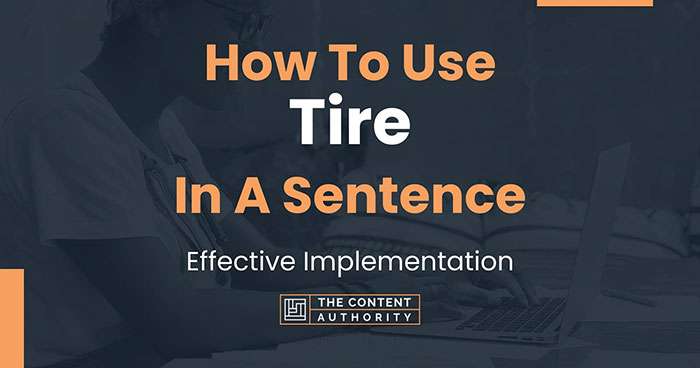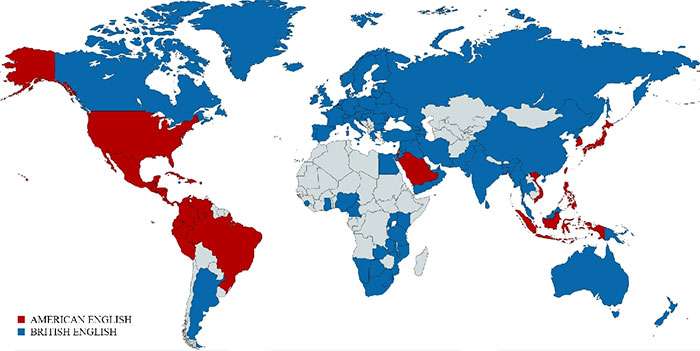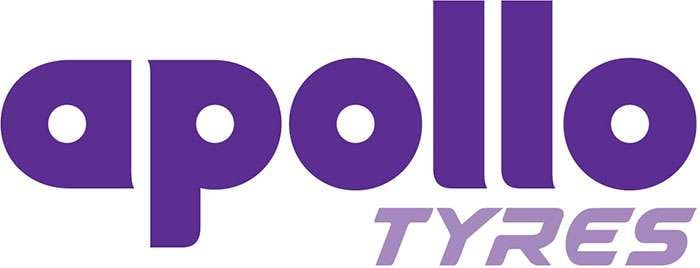
Tire or tyre? This spelling difference comes from an unexpected source - the medieval word 'attire.' Early wheels with coverings were considered "dressed" wheels [1]. The connection makes perfect sense when you understand that adding a tire essentially clothes a bare wheel rim.
Americans write 'tire' while British English speakers use 'tyre.' This distinction became standard in the 19th century when pneumatic tires gained popularity in the UK [1]. The spelling 'tire' actually dates back to at least the 15th century [1], though its specific use for wheel coverings developed later. Understanding this tire vs tyre difference helps you choose the right spelling for your audience [2].
When you need to write about wheels and their coverings, knowing which spelling to use matters. We'll show you exactly when each spelling became standard, where each version is used around the world, and why both spellings are correct depending on your context. You'll also discover why major companies choose one spelling over another and learn how to determine which spelling works best for your writing needs.

Image Source: The Content Authority
Understanding how wheel coverings got their name takes us back centuries before the first automobile. The story begins with medieval knights and their equipment.
Around 1300, "tir" appeared as a shortened form of attire, originally describing a knight's equipment [1]. The medieval term "attire" meant "equipment, dress, covering, trappings or accouterments" [1]. This shortened version gradually expanded beyond military gear to describe any type of covering or dressing.
Both spellings "tire" and "tyre" coexisted throughout the 15th century in English writing [2]. Writers used them interchangeably without the regional distinctions we see today.
The late 15th century marked the first documented use of "tire" specifically for wheels. Historical records describe "iron plates forming a rim of a carriage wheel" [1]. These metal bands solved two critical problems - they held wooden wheels together under stress and prevented excessive wear [3].
Interestingly, the term also appeared in other applications during this period. Craftsmen used it to describe decorative metal edging for bells [1]. One alternative theory connects the word to "totie," since metal tires pulled wooden wagon wheels tightly together when they shrank after being fitted red-hot [5].
Between the 17th and 18th centuries, "tire" became the dominant spelling in print worldwide [2]. This changed during the 1840s when British English speakers began using "tyre" for malleable iron applied to railway car wheels [2].
The invention and popularization of rubber pneumatic tires from 1877 onward solidified the spelling distinction along geographical lines [1]. The Times newspaper in London continued using "tire" as late as 1905 [2]. However, "tyre" became firmly established as the standard British spelling throughout the 20th century [2], creating the regional difference that persists today.

Image Source: Englishilm
The geographic split between "tire" and "tyre" follows clear national boundaries. Each spelling represents distinct linguistic traditions across English-speaking countries.
Throughout the 20th century, "tyre" became firmly established as the standard British spelling [2]. This spelling predominates across the United Kingdom and most Commonwealth countries [5]. Britain, Australia, and other nations following British English conventions use "tyre" when referring to rubber wheel coverings [6]. The standardization occurred with the introduction of pneumatic tires, when British English speakers adopted "tyre" as their preferred spelling [5].
British English actually uses both "tire" and "tyre" simultaneously, but with completely different meanings [7]. The word "tire" functions exclusively as a verb meaning to become exhausted or fatigued [7]. British speakers say "Since the onset of her illness, she tires very easily" or "I find that I tire quite easily these days" [7]. This distinction prevents confusion between wheel coverings and the concept of fatigue.
The United States uses "tire" as the standard American English spelling [8]. Canada represents a notable exception among Commonwealth countries by primarily using the American spelling "tire" [9]. This consistency extends to plural forms - Americans use "tires" while British English speakers write "tyres" [9].
The linguistic boundary between these spellings follows national borders rather than creating regional confusion. Both spellings describe identical objects - rubber coverings that fit on vehicle wheels [10].

Image Source: Reddit
Both "tire" and "tyre" are correct spellings that serve different audiences. Understanding when to use each spelling helps you communicate more effectively with your readers.
Your target audience determines which spelling to choose [11]. When writing for North American readers, use "tire." For British Commonwealth audiences (excluding Canada), "tyre" is the right choice [9]. This distinction becomes crucial in professional writing - academic papers, business documents, and marketing materials require consistent spelling throughout [11].
Global usage patterns favor "tire" - approximately 76% of people worldwide now prefer this spelling [12]. Major European manufacturers like Michelin and Continental use "tire" in their global communications. Most Asian countries, particularly Japan, have adopted this spelling as well [12]. Even in China, where both forms exist, "tire" usage continues growing [12].
Consider these examples for different contexts:
British English: "The new tyres gave the truck better grip in icy weather." [13]
American English: "The new tires gave the truck better grip in icy weather." [13]
When searching online for performance tires in America, use "tire" - websites like Performance Plus Tire appear higher in search results with the American spelling [14]. Regional spelling choices affect search visibility and audience engagement.
Consistency throughout your writing prevents confusion [11]. While some claim "tyre" is disappearing, major UK businesses like Kwik-Fit and Halfords still use "tyre" exclusively in their communications [15]. The key is matching your spelling to your audience's expectations and maintaining that choice throughout your content.

Global tire companies make deliberate spelling choices that go far beyond simple preference. These decisions reflect strategic business considerations that affect everything from brand recognition to market positioning.
Apollo Tyres chose 'tyre' to maintain consistent brand identity across all their communications [4]. This spelling choice becomes part of their brand DNA, helping customers recognize the company instantly. When companies expand internationally, consistent spelling helps maintain brand recognition regardless of location.
Companies originating in British English countries naturally build their identities around the 'y' spelling from day one. This creates authentic brand positioning in markets where British English predominates.
Using 'tyre' eliminates potential confusion since 'tire' also means to become exhausted or weary [16]. Apollo Tyres recognizes this advantage, stating that their spelling "instantly identifies the product without any room for misinterpretation" [4].
This distinction proves especially valuable in marketing materials where context might not immediately clarify the intended meaning. Clear product identification helps customers find exactly what they need without confusion.
Historical relationships significantly impact corporate spelling decisions. Countries with British colonial history naturally adopted 'tyre' as their standard spelling. Apollo Tyres explains that "India was under British rule... and as a result we tend to use the UK English standard over the US English spellings" [4].
This linguistic heritage creates authenticity in established markets where British English dominates. Companies benefit from using spelling that feels natural and correct to their primary customer base.
The tire vs tyre spelling story shows how language evolves to serve different regions and markets. Both spellings trace back to medieval times, but they split along geographical lines to create today's clear distinction.
Your spelling choice comes down to knowing your audience. American readers expect "tire" while British Commonwealth audiences recognize "tyre" as correct. Companies understand this - they choose their spelling to match their primary markets and build consistent brand identity.
The key is staying consistent once you pick a spelling. Whether you write "tire" or "tyre," you're describing the same essential automotive component. At Performance Plus Tire, we help customers find the right products regardless of how they spell the word - quality matters more than regional terminology differences.
Both spellings will continue serving their respective markets. This spelling difference reminds us that English adapts differently across the globe, creating rich linguistic diversity. You can confidently use either spelling knowing both have centuries of history supporting their correctness.
Understanding the tire vs tire spelling difference helps you communicate effectively with global audiences and choose the right version for your context.
• "Tire" originated from "attire" - The word evolved from medieval concept of "dressing" wheels, as tires essentially clothe bare wheel rims with protective covering.
• Geography determines correct spelling - Use "tire" for American audiences and "tire" for British Commonwealth countries (except Canada, which uses "tire").
• Both spellings are linguistically correct - The difference emerged in the 19th century when British English adopted "tire" specifically for pneumatic wheel coverings.
• Context and consistency matter most - Choose based on your target audience's location and maintain the same spelling throughout your entire document or communication.
• Global trend favors "tire" - Approximately 76% of people worldwide now prefer the American spelling, with many international companies adopting it for broader market appeal.
The key is matching your spelling choice to your audience's expectations while maintaining consistency throughout your writing. Whether you choose "tire" or "tire," both refer to the same essential automotive component that keeps vehicles rolling safely down the road.
"Tire" is the British English spelling, while "tire" is the American English version. Both refer to the rubber covering on vehicle wheels, but their usage depends on geographical location and audience.
Companies like Apollo Tires use "tire" to maintain brand consistency, avoid confusion with the verb "tire" (meaning to become fatigued), and reflect their origins in countries that follow British English conventions.
The spelling distinction emerged in the 19th century when British English adopted "tire" specifically for pneumatic wheel coverings, while "tire" remained the standard in American English.
Although both spellings are correct in their respective contexts, "tire" has become more prevalent globally. Approximately 76% of people worldwide now prefer the American spelling "tire."
Choose based on your target audience's location. Use "tire" for North American readers and "tire" for British Commonwealth audiences (excluding Canada). Maintain consistency throughout your document to avoid confusion.
[1] - https://www.apollotyres.com/en-in/stories/blogs/tire-guides/tires-vs-tires-spelling-difference/
[2] - https://www.tyresafe.org/tires-or-tires-which-is-correct/
[3] - https://tirestreets.co.uk/blogs/rethink-your-rubber/tire-vs-tire-what-is-the-difference
[4] - https://www.etymonline.com/word/tire
[5] - https://en.wikipedia.org/wiki/Tire
[6] - https://tiresandterrain.com/article/tire-or-tire-the-etymology-of-rubber-rings/
[7] - https://en.wiktionary.org/wiki/tire
[8] - https://www.bachelorprint.com/british-english-vs-american-english/tire-or-tire/
[9] - https://bicycles.stackexchange.com/questions/41383/why-is-the-british-version-of-tire-is-tire
[10] - https://tirestreets.co.uk/blogs/rethink-your-rubber/tire-vs-tire-what-is-the-difference
[11] - https://quillbot.com/blog/uk-vs-us/tire-vs-tire/
[12] - https://www.grammarly.com/commonly-confused-words/tire-vs-tire
[13] - https://www.bachelorprint.com/ca/british-english-vs-american-english/tire-or-tire/
[14] - https://kelucktyre.com/article/the-difference-between-quottirequot-and-quottyrequot-and-global-usage-trends-i00115i1.html
[15] - https://proofed.com/writing-tips/spelling-tips-tire-tire/
[16] - https://www.boschservicebrisbane.com.au/post/tires-or-tires-which-is-correct-and-why-does-it-matter
[17] - https://english.stackexchange.com/questions/307719/what-s-the-difference-between-tire-and-tire
[18] - https://www.reuters.com/article/world/us/fatigued-or-just-tired-there-is-a-difference-idUSCOL755941/